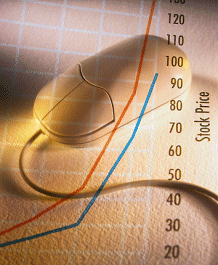|
What makes I-Master different from other index
trading systems?
� It was developed using
seven indices to yield a larger data sample size, thus attempting�
to� minimize curve-fitting.� (Curve fitting refers to using
computerized data to �fit� into a desired result.� Generally
experienced with small amounts of data which can generate false
results).
� Performance
and testing was done using $300 for slippage and commissions.�
Since the system enters and exits the market on stop orders, this can
have a large impact on the performance of a system.� Many systems
are developed and performance figures given using $100 or less for
commissions and slippage.� To illustrate how important the�
difference between the $300 and $100 most system developers use in their
figures, the��� following example will be helpful: If an
index system trades once per day or twenty times per month 20 X $200 =
$4000 or $48,000 per year!� This realistic slippage and�
commission which is built into the performance record is substantial and
overcome by I-Master in hypothetical testing.
Long and short trade performance is balanced.� Most index systems
are highly biased to the long side due to the sustained up-trend�
of the S&P in the 1980�s and 90�s.� I-Master seeks
to be equally successful during both up and down trends in the stock�
market.�
Flexibility Investors will have the option of trading the I- Master
system with mini contracts instead of the full sized ones.� Mini
contracts are one fifth the size of a standard contract, thus allowing
for more options when� it comes to diversifying a modern investment
portfolio.���
Futures trading involves� substantial risk and is not appropriate
for all investors
What
is I-Master?
Who developed I-Master?
What markets can be traded with I-Master?
Does I-Master fit into your portfolio?
System Performance
How much does it cost to buy I-Master?
What do you get when you buy I-Master?
How can Trade Center, Inc. help?
|


